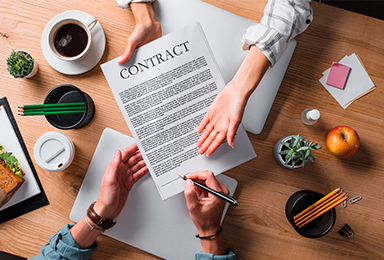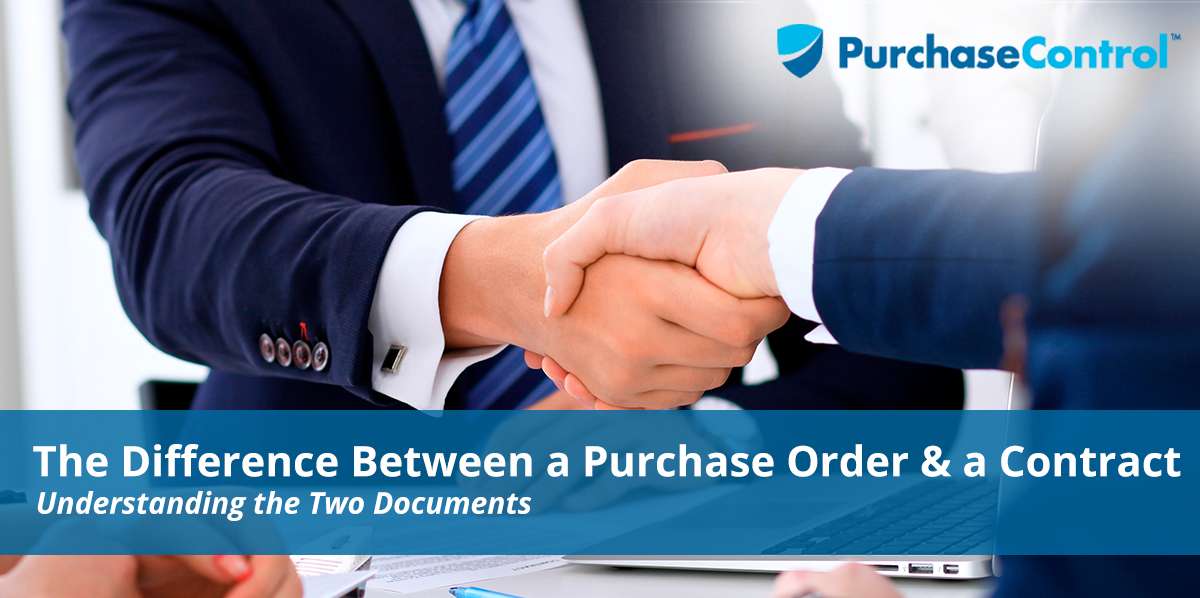The Difference Between a Purchase Order & a Contract
At first glance, purchase orders and contracts look similar, so distinguishing one from the other can be complex. Part of what makes this so confusing is that purchase orders become contracts once the vendor accepts them, but not every contract is a purchase order.
When choosing which document to use, disregard the misconception that contracts are more detailed than POs, and consider POs as a one-time contract, only valid for the purchase referenced on that order.
What is a Purchase Order?
A purchase order is a document sent from a buyer to a seller, with a request to order a product. When the seller accepts the document, it forms a legally binding contract between the buyer and the seller.
The purchase order is usually the result of a purchase order request, also known as a purchase requisition. A person outside of the purchasing department has a need for an item, then uses the purchase requisition to make a formal request for the purchase to be made. The department head or purchasing manager approves the requisition and converts it to a purchase order.
The purchase order needs to include descriptions, quantities, prices, and discounts on products in the order. The ideal PO will also include payment terms along with shipment/deliver dates. It also includes a purchase order number, the date of issue, and the signature of the person authorizing the purchase.
A blanket purchase order, also known as a blanket purchase agreement, or call-off order, is a PO that a customer places with a supplier to allow for multiple delivery dates over a period of time generally negotiated to take advantage of predetermined pricing. These are typically used when there is a recurring need for expendable goods. Blanket purchase orders are also legal documents once accepted by the supplier, however, do not eliminate the need for a formal contract with the supplier.
What is a Contract?
A contract is a document that details the products being sold, sets the agreed upon prices, and defines the terms and conditions of the purchase agreement for a certain period of time. Contracts also provide the value and number of purchase orders and invoices.
The difference between a purchase order and a contract isn’t readily apparent. Use the factors below to help you see which document you should use and when, when it comes to making purchases for your business.
“To keep your business as protected as possible, you should create contracts with the largest vendors. Then, use purchase orders to track purchases under the terms of the contract to ensure your compliance.”
Long Term vs. Short Term
The main difference between the two documents is the duration. Purchase orders represent single business transactions. Contracts are used for long term arrangements between the buyer and seller. Contracts may also allow for renewal options.
Contracts may outline the terms to be used for all the purchase orders from the vendor within the contract’s valid timeframe. For instance, if you have a contract with a vendor for a year, all purchase orders with that vendor over the course of the year reference the terms and conditions to ensure everything remains in compliance with the contract itself.
Legalities and Protecting Your Business
POs are commercial documents, and contracts are legally binding documents. POs do not become legally binding until the seller accepts them. The contract, on the other hand, is a legal document from the beginning, as soon as both parties sign it. The two documents are also different because the purchase orders have no value unless the seller approves them.
Risk: Purchase Order vs. Contract
Generally, the riskier the business transaction, the better it is to use a contract. Why? Because the contract holds more legal value than a purchase order. In situations where there is a significant risk, contracts are better because they clearly spell out the responsibilities of each party along with performance standards. This reduces risk exposure.
When using a contract, it’s a good idea to use POs along with it, because contracts do not outline quantities or delivery times.
Terms and Conditions
Terms and conditions are typically listed in both contracts and purchase orders. The difference is that terms and conditions are more specific in contracts. Contracts should be the option used when performance standards, scope of work, and change management requests need to be clear to everyone. Use the contract when there’s a complex set of terms associated with the purchase than can be stated in the purchase order.
Used for Different Things
A purchase order and a contract are used for different things, though both have their place in the purchasing process. Under normal conditions, you would use a PO to order and purchase an item, while the contract is used to pay for a service. Purchase orders should for single short-term purchases, while contracts are better for building long-term buying relationships. And of course, because of the stronger legal value, use contracts with any deals that carry a larger risk.
Choosing between using contracts and purchase orders has significance because each document offers a different approach to purchasing. Rather than choosing between the two at random, first consider the situation and then select the better option. For the greatest chance of success, your company needs a solid software solution to manage both purchase orders and contracts for all projects.
In PurchaseControl, it is possible to create vendors and add products you commonly purchase from them. You can quickly and easily attach documents to the vendor, such as the contract, so it’s available for reference when needed as you create purchase orders.
PurchaseControl makes it easy to manage both contracts and purchase orders.
Find Out How








